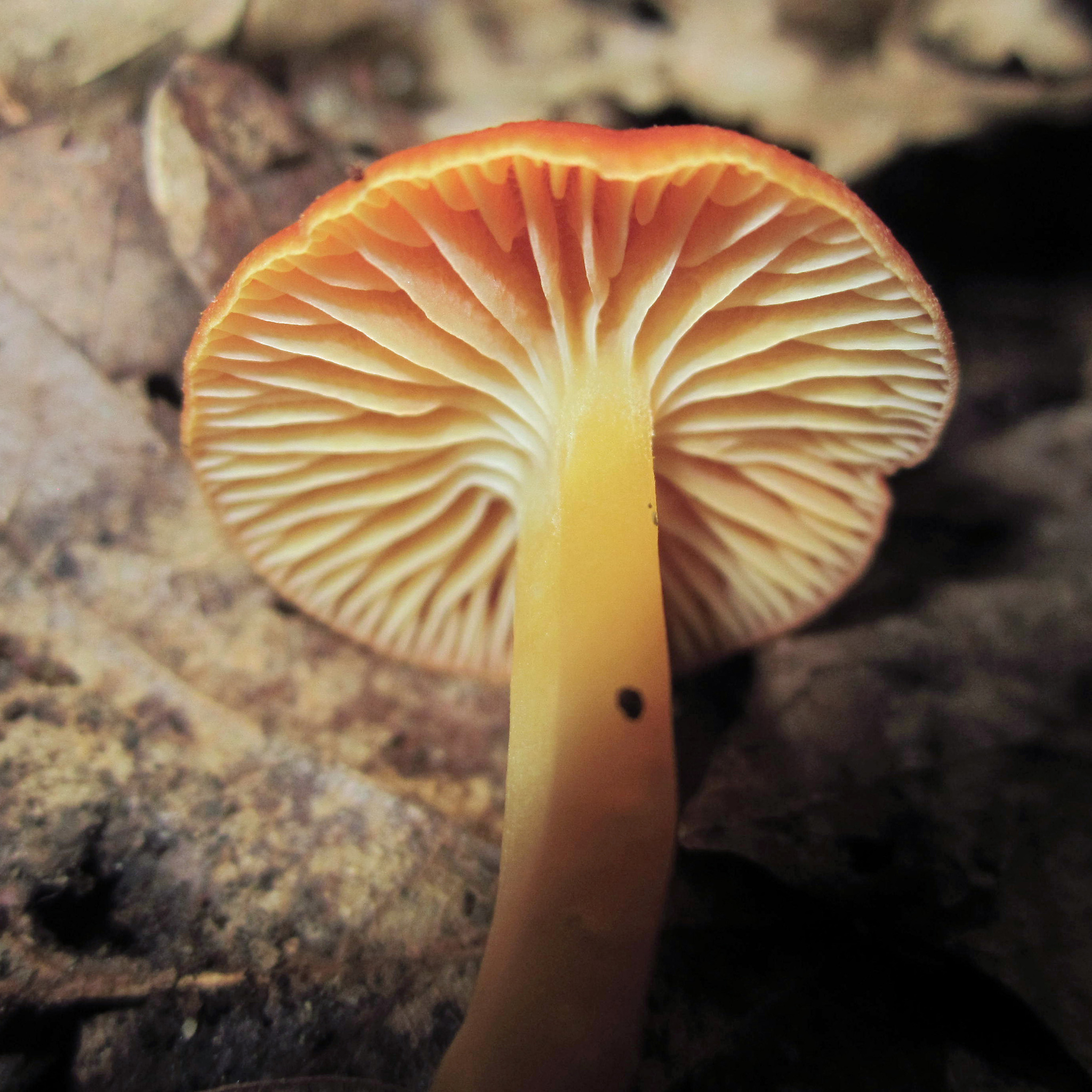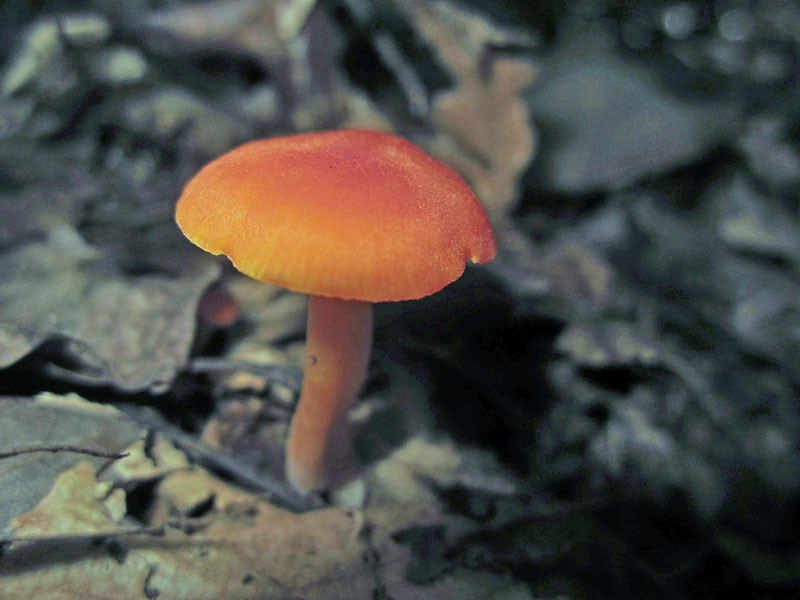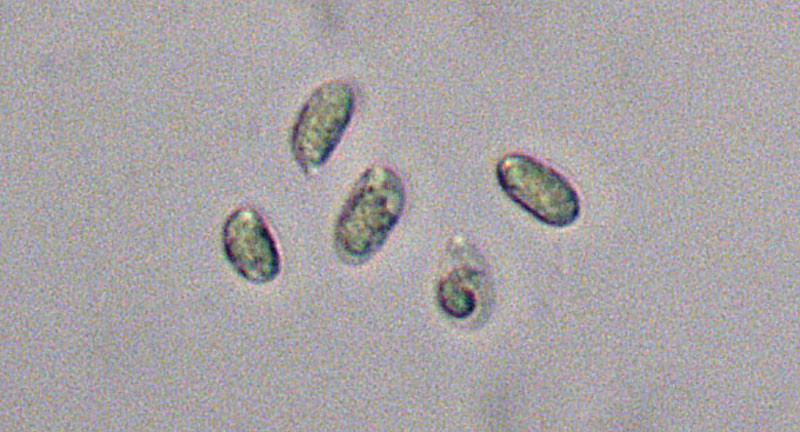Map Snapshot


3 Records
Status
Found solitary or in groups; on ground in deciduous woods.
Description
Cap: Orange to scarlet often with narrow yellow margin, convex to plane, mostly dry, smooth; center may be slightly depressed, margin incurved when young; flesh thick, similar to cap color, usually has sweet honey-like odor (most pronounced when dry). Gills: Short, distant, broad, short decurrent, yellow, usually with a pale margin. Stalk: Smooth, dry, usually equal, shades or orange and yellow. (J. Solem, pers. comm.)
Seasonality Snapshot
Source: Wikipedia
| Hygrocybe reidii | |
|---|---|

| |
| Scientific classification | |
| Domain: | Eukaryota |
| Kingdom: | Fungi |
| Division: | Basidiomycota |
| Class: | Agaricomycetes |
| Order: | Agaricales |
| Family: | Hygrophoraceae |
| Genus: | Hygrocybe |
| Species: | H. reidii
|
| Binomial name | |
| Hygrocybe reidii Kühner (1976)
| |
Hygrocybe reidii, commonly known as the honey waxcap,[1] is a mushroom of the waxcap genus Hygrocybe. It was published by Robert Kühner in 1976, with the specific epithet honouring British mycologist Derek Reid.[2] It is based on a species originally published as Hygrophorus marchii by Giacomo Bresadola in 1928, but with an insufficiently precise description, which later led to conflicting interpretations about the species concept. In 1969, Reid gave a precise description of the fungus common in Europe, but Kühner had a different interpretation of H. marchii, and gave a new name to Reid's concept of the species.[3]
The fungus makes reddish-orange to reddish fruit bodies with dry, smooth caps. The flesh has an odour of honey, particularly when the tissue is rubbed, or when it is drying.[3] It is found in Europe, and reported from eastern North America, although it is uncertain whether the North American population represents the same species.[4]
See also
[edit]References
[edit]- ^ Holden L. (July 2014). "English names for fungi 2014". British Mycological Society. Archived from the original on 2015-09-23. Retrieved 2016-02-06.
- ^ Kühner R. (1976). "Agaricales de la zone alpine. Genre Hygrocybe (Fries) Kummer". Bulletin de la Société Mycologique de France (in French). 92: 455–515.
- ^ a b Kibby G, Ainsworth M. (2008). "A tribute to Derek Reid: British Fungi named after him". Field Mycology. 9 (2): 51–54. doi:10.1016/S1468-1641(10)60408-2.
- ^ Kuo M. (July 2014). "Hygrocybe reidii". MushroomExpert.com. Retrieved 2016-02-06.
External links
[edit]





